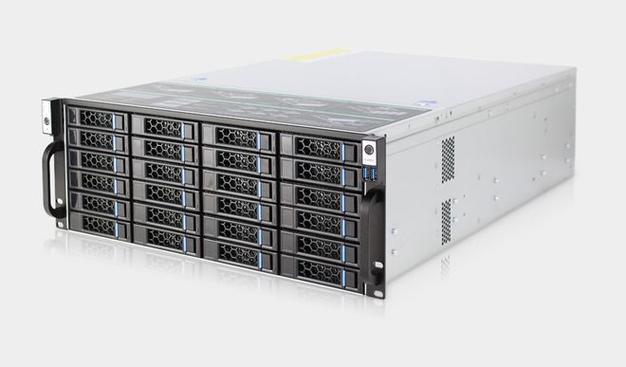- 欢迎使用千万蜘蛛池,网站外链优化,蜘蛛池引蜘蛛快速提高网站收录,收藏快捷键 CTRL + D
如何设置MX CDN加速?简单易懂的配置步骤让您的网站速度飞起



In today's internet era, website loading speed is one of the key factors that affect user experience and search engine rankings. Content Delivery Network (CDN) accelerates set up typically involves pointing the domain's DNS records to the CDN service provider's servers, configuring cache rules, and SSL/TLS certificates. The specific steps include registering for CDN services, modifying DNS records, configuring CDN options, and testing the results.
Why is MX CDN Acceleration Important?
MX CDN acceleration is a specific CDN service that focuses on providing fast and reliable content distribution solutions for websites. By caching website content on globally distributed servers, CDN accelerates content transmission speeds, reduces latency, and enhances user experience.
What are the Steps to Configure MX CDN Acceleration?
1. Choose the right MX CDN service provider
Market Research: Understand the performance, pricing, and service reviews of different MX CDN service providers.
Determine Requirements: Select a service package that suits your website's traffic, user distribution, and budget.
2. Register and configure MX CDN
Account Creation: Create an account on the chosen MX CDN service provider's website.
Domain Configuration: Add the domain to be accelerated and follow the provider's guidelines to configure CNAME records, delegating domain resolution to the CDN service provider.
3. Adjust origin server settings
Prepare Origin Server: Ensure the origin server can handle requests from the CDN, which may involve configuring the server to accept specific HTTP headers.
Security Settings: If using SSL/TLS encryption, apply and install an SSL certificate from the MX CDN service provider.
4. Configure cache rules
Cache Strategy: Define which content should be cached and for how long. For example, static files like images, CSS, and JavaScript files can have longer cache times.
Handling: For dynamically generated content, set appropriate cache rules or opt not to cache.
5. Optimize Performance
Geographical Routing: Utilize MX CDN's geolocation feature to direct user requests to the nearest servers.
Load Balancing: Configure load balancing to ensure even distribution of requests during high traffic periods.
6. Monitor and Adjust
Performance Monitoring: Track website performance using monitoring tools provided by the MX CDN service provider.
Continuous Optimization: Adjust cache rules and load balancing settings based on monitoring data and user feedback.
7. Maintain Updates and Support
Content Updates: Ensure that the CDN cached content stays synchronized with the origin server updates.
Technical Support: Regularly check the MX CDN service provider's support services to ensure prompt resolution of any technical issues.
Related FAQs
Q1: Will using MX CDN affect website SEO?
A1: Generally, using MX CDN can have a positive impact on a website's Search Engine Optimization (SEO) as it can improve the site's loading speed. Since loading speed is a ranking factor, correct configuration of MX CDN, ensuring search engine crawlers can access website content correctly, and handling SSL certificates properly, are less likely to have a negative impact on SEO.
Q2: How to ensure the correctness and security of MX CDN configuration?
A2: Follow the official documentation provided by the MX CDN service provider for configuration. Ensure every step is correctly executed, use the testing tools and monitoring services provided by the provider to check the configuration's correctness and performance. Regarding security, ensure all data transfers are conducted over secure SSL/TLS connections. Regularly update and maintain SSL certificates, check security settings regularly to prevent potential DDoS attacks or other network security threats.
Below is a simplified overview describing the steps to set up MX CDN acceleration:
| Step | Operation | Description |
| 1 | Choose CDN provider | Select appropriate CDN service providers such as MX CDN. |
| 2 | Register Account | Register and log in to the MX CDN official website. |
| 3 | Create Service | Create a new CDN service in the control panel, set service name, and acceleration domain. |
| 4 | Configure Origin Site Info | Fill in the origin site domain and IP address, specify where to get content from. |
| 5 | Set Origin Pull Protocol | Set the origin pull protocol based on whether the origin site is HTTP or HTTPS. |
| 6 | Configure CNAME | Obtain the CNAME record assigned by MX CDN and add it to the domain's DNS resolution. |
| 7 | Set Cache Strategy | Configure cache time, cache type, and other parameters to optimize acceleration effects. |
| 8 | Enable Security Settings | Configure HTTPS, HTTP/2, and other security acceleration options as needed. |
| 9 | Configure Advanced Functions | If necessary, configure advanced functions like load balancing, intelligent routing, etc. |
| 10 | Test Verification | Test the CDN speed acceleration effects by accessing the acceleration domain. |
| 11 | Monitor and Adjust | Observe the acceleration effects and make necessary adjustments using the monitoring tools provided by MX CDN. |
Please note that the name "MX CDN" used in the above overview is a hypothetical CDN service provider. Actual operations should be based on the specific steps provided by the chosen service provider. The operation interface and functions of different CDN service providers may vary; therefore, it is essential to refer to the specific provider's official documentation for detailed configuration.
For more information or questions, feel free to leave a comment below. Thank you for reading and don't forget to like, share, and follow for more updates!
| 广告位招租-内容页尾部广告(PC) |
相关文章推荐
蜘蛛技巧最新文章
- 1. 如何提升MySQL性能?7种优化方法让数据库运行更高效 2. 为什么你的MySQL数据库速度慢?5种实用技巧帮你解决优化难题
- 如何进行等保测评宁夏?详解等保测评宁夏的计费说明
- “如何注册cc域名?一步步教你抢注稀缺双拼域名”
- 大商创虚拟主机:SAP S/4HANA服务器配置最佳实践 如何实现大商创虚拟主机的SAP S/4HANA服务器配置
- 莆田网站建设电话,一个电话解决您的建站需求
- “单片机开发及工具软件大合集:深入剖析基础概念,助您轻松实践”
- 如何磁盘数据恢复?从备份中恢复丢失的磁盘文件
- 操作系统是什么的接口:深入探讨操作系统与应用程序之间的关系 漏洞管理服务的漏洞库是基于什么的:揭秘漏洞管理服务背后的数据基础
- PersistentVolumeClaims状态有什么问题?如何替换PersistentVolumeClaims
- “为什么苹果8p微信不会爆炸?了解安全科技背后的原理”












)

)

)
)
)

